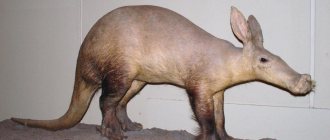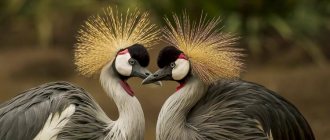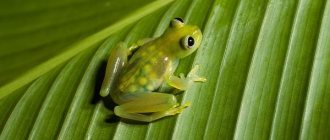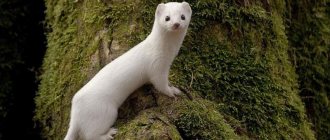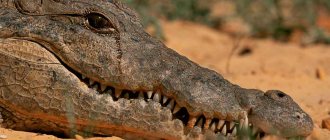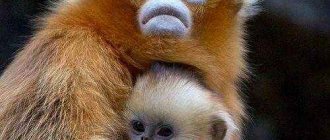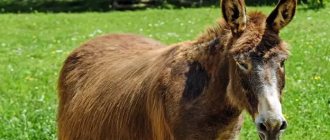Unusual animals live everywhere. They hide from people underground and in the depths of the sea, in the hot sands of deserts and in impassable jungles, in mountain caves and swamps. Of course, all representatives of the animal world are amazing in their own way, but on our planet there are many truly mysterious and strange animals about which most people know almost nothing. Some creatures have such a strange appearance that you can’t help but wonder if these are aliens trying to get lost in the diversity of our fauna. Want to know more about them? Then we present to your attention a rating of the most amazing and unusual animals on our planet.
Naked mole rat
The naked mole rat (Heterocephalus glaber) is an extremely interesting rodent native to Africa.
The naked mole rat (also called the desert rat) lives in underground tunnels and rarely comes to the surface. The sausage-like creature is notable not only for its specific appearance, although the naked, sparsely haired, wrinkled pale skin, and especially the protruding teeth, you will agree, make an indelible impression. They say that with its sharp and hard, diamond-like teeth, the beast is able to gnaw through even concrete!
These animals are also unusual in that they have an exceptionally high life expectancy for rodents (up to 30 years). Naked mole rats do not have strokes, heart attacks, cardiovascular diseases, diabetes, fatal liver or kidney diseases, and their organs and tissues do not wither at all over time. This is the only creature that practically does not feel pain. Another unique feature of the animal is that it can do without oxygen for up to 20 minutes! This ability makes naked mole rats similar to plants!
The naked mole rat has recently come under close attention from scientists. Perhaps someday, thanks to this very creature, gerontologists will be able to answer the question: How to slow down aging?
Guara
Guara, maned wolf or aguarachai is a mammal from the canine family. Belongs to the order of predators.
What is special about guara? This wolf looks more like a fox than a wolf. The guara is the largest canid in South America. It has a reddish color. With a body length of 130 cm, the animal has slender, high legs about 70 cm in height. In addition, with a short body, the wolf has a long muzzle and disproportionately high ears. The maned wolf weighs about 20–23 kg.
Guara: Wikipedia
You can meet aguarachaya in the area of the Parnaiba River (Brazil), in Bolivia and Paraguay. Now the animal's population has begun to decline, which is why the IUCN has classified the species as endangered. Now on average there is one animal per 300 km².
Gymnur
Gymnurs (lat. Galericinae) are the closest relatives of the prickly hedgehogs familiar to us, but their appearance is not at all like that of a hedgehog. These strange creatures are more reminiscent of possums, shrews or rats, but they are enormous in size - up to 45 centimeters in length, and a few tens of centimeters more on their hairless, rat-like tail. Gymnur even has a middle name - moon rat. But the most important thing is that they have no thorns at all!
Moon rats live in the tropical rainforests of Malaysia, the Philippines and Indonesia. If ordinary hedgehogs use spines as protection from enemies, then the gymnur is more original here: near the base of the moonrat’s tail there are glands that secrete a liquid with a strong unpleasant odor. They say that the animal smells very strongly of onions!
The Australian echidna is a toothless animal that carries eggs and carries them in a pouch.
When the echidna cannot hide in the thickets, it buries itself in the ground, after which only a few needles are visible on the surface
The Australian echidna is another very unusual mammal. Outwardly, the echidna looks a little like a hedgehog or a small porcupine - it also has sharp quills on its back, which serve as protection from predators. The body length is approximately 30-45 cm, weight usually varies between 2.5-5 kg. The coat is coarse, black or brownish in color.
The echidna’s muzzle is very peculiar, it has an elongated shape, and it seems that a thin beak about 7.5 cm long is attached to the round head. The animal’s mouth is very small, toothless and cannot open wider than 0.5 cm. This the structure of the head allows the echidna to easily obtain its favorite food - ants and termites. The animal has a long sticky tongue in its mouth, which is quickly thrown out when catching insects.
The female echidna does not give birth to a young, like most mammals, but first lays one small egg in a leathery shell, weighing 1.5 g and with a diameter of about 1.5 cm. The female places this egg in a pouch that forms on her stomach and holds it there 10 days. When this period has passed, a tiny baby hatches from the egg, only 1.5 cm long and weighing 0.5 g. It finds special milk pores on its mother’s stomach through which milk is secreted and licks it off.
Echidna feeds her babies pink milk
Another unusual feature of the echidna is the color of its milk; it is not white, like that of all mammals, but pink due to its high iron content. The cub feeds on it for about 6.5 months. For the first 1.5-2 months he lives in his mother’s pouch, and when spines grow on his back, he leaves the pouch and just sits in a hole. At approximately seven months of age, the young animal leaves the hole and begins an independent life.
Madagascar bat
In the dry forests of Madagascar lives a very unusual lemur, completely different from its relatives. The little arm, or aye-aye (aye-aye) (Daubentonia madagascariensis) is a mammal from the order of prosimians, the only representative of the family of armlets. This is truly an amazing creature! Expressive orange-yellow or greenish eyes, huge leathery ears and a fluffy tail about 60 long are the main decoration of the little arm. The body of the animal, about 40 cm long, is covered with hard, straight dark hair. A distinctive feature of the animal is its elongated, thin fingers with long and slightly bent nails.
There have been heated debates among zoologists for a long time: which species should this amazing creature be classified as: rodents or lemurs? In the end, they nevertheless came to the conclusion that this was a lemur that had only deviated slightly in the course of evolution from the general trunk of the group. You can read more about the Madagascar bat here.
Cuban slittooth
The Cuban slittooth (Solenodon cubanus) is an extremely interesting relict animal. Scientists thought that it disappeared more than a hundred years ago, but it has appeared again! Compared to other insectivores, this animal is quite large - body length 28-35 cm plus a long bare tail, weight - no more than 1 kilogram. Externally, the slittooth looks like a rat, a shrew, and a hedgehog. This unusual animal lives in the mountain forests of Cuba. The animal's muzzle is elongated into a proboscis. The front paws are equipped with long, thick and hard claws that help it dig holes.
Momot birds
This family of tropical birds includes kingfishers, rollers and bee eaters. These are all medium-sized birds, with soft plumage and long tails moving in different directions. A distinctive feature of the tail of momot birds is the bare frame of the longest feathers, which is why they resemble a racket.
Many of them even pluck their own tail feathers, leaving wide flags at the ends. The bright colors and unusual appearance have made these birds very popular. They are even the national symbol of El Salvador and Nicaragua.
Sirichta
Sirichta (Tarsius syrichta), or as it is also called, the Philippine tarsier, is found in the Philippines - in rain forests or in bamboo thickets. This tiny animal, whose body length is about 15 cm, 8 of which is in the tail, and whose weight does not exceed 100 grams, leads an arboreal lifestyle. A distinctive feature of the sirikhita is that its eyes are simply huge for such a tiny thing; in addition, the eyes can glow in the dark! The animal's head can rotate almost 180 degrees on its neck. A wide mouth and large bare, very mobile ears give the appearance of this creature even more originality. Yes, it’s difficult to call him handsome; local residents are even a little afraid of tarsiers, considering them ghosts.
Tarsiers are famous for their jumping ability - they jump very far compared to their own size - up to a distance of 1 meter.
Star-nosed mole
The star-nosed mole (Condylura cristata) is found in marshy areas and wet grasslands of North America. It is unique in that on its face there are twenty-two skin growths (or tentacles) resembling a star. Star-nosed spends his entire life underground, where his eyes are completely useless, and his nose helps him find his way among the labyrinth of tunnels. The starnose feeds on worms, snails and insects, which it finds with its sensitive nose, using both its sense of smell and touch.
The sea sheep is an animal that is capable of photosynthesis.
The size of the sea sheep is very tiny, its length varies from 0.5 to 1 cm.
The sea sheep, or sheepleaf, was discovered as recently as 1993. This marine mollusk lives off the coast of the Philippines, Japan and Indonesia and has become a real discovery in the field of biology. The sea sheep captivated everyone with its unusually cute appearance and surprised everyone with its ability to photosynthesise, which is known to be characteristic of plants.
The size of the sea sheep is very tiny, its length varies from 0.5 to 1 cm. It has two small eyes on its head, and two rhinophores on the top of its head. Rhinophores are special chemosensory processes that have special sensitive hairs that help the animal find food in water. In shape, these processes resemble sheep's ears, which is why the animal got its name.
The sea sheep feeds on algae and has the amazing ability not to digest chloroplasts from plants, but to accumulate them in its body. The accumulated chloroplasts allow the animal to carry out the process of photosynthesis, that is, convert sunlight and carbon dioxide into nutrients. This unusual process is scientifically called kleptoplasty.
Platypus
The platypus (Ornithorhynchus anatinus) lives in streams, ponds and rivers in Australia. These animals usually reach a length of 30–40 centimeters and weigh about 2 kilograms.
The unusual thing about the platypus is that it combines the features of mammals, birds, reptiles and even fish. Looking at it, you won’t immediately understand whether it’s a bird or some kind of animal... In fact, these creatures are mammals, although they lay eggs. The platypus is a bit like a beaver, but with a soft beak covered with elastic skin, which is not found in any other animal. Underwater, the platypus closes its eyes and uses its beak, with which it senses weak electrical impulses emanating from its prey. Using its beak, the platypus digs through the mud in search of small fish, frogs and insects. Scientists are still arguing about the origin of this species, but only one thing is clear - this is a unique creation of Mother Nature, which differs from all other species currently living on planet Earth.
Male platypuses have poisonous spurs on their hind legs. The animal's venom is unlikely to kill a person, but it causes severe pain at the injection site. But for small animals this poison is often fatal.
Protopter is a fish that hibernates and can live for several years without water.
Protopters can breathe both oxygen dissolved in water and ordinary atmospheric air.
Protoptera also surprises with its structure and way of life. This fish lives in hot Africa in reservoirs with fresh standing water, which periodically dry out completely. But this is not a problem for the protopter, since it can cope well with unfavorable conditions - with a lack of moisture, this unusual fish will go into a long hibernation, lasting up to 4 years.
There are 4 types of protopters, the largest of which reaches a length of 2 meters, and the smallest - no more than 50 cm. All these fish have an interesting feature - they are double-breathing, that is, they have both gills and lungs. This means that they can breathe both oxygen dissolved in water and ordinary atmospheric air. Moreover, protopters prefer to breathe with their lungs, for which they often lean out of the water and inhale air. Interestingly, when they inhale, they make a loud sound, similar to a squeal, which spreads far around the area.
When the dry season hits in Africa, the water bodies begin to dry up, and the protopters have to prepare for a long hibernation, which usually lasts from 6 to 9 months. To survive the dry months, the fish digs a nest at the bottom of the lake, hides in it and waits for the water to dry completely. After this, the protopter secretes a special mucus. When the mucus dries, it forms a protective cocoon, and the fish hibernates until the onset of the rainy season. During hibernation, the fish becomes very thin, losing about 20% of its weight.
The protopter has a favorite sleeping position; it folds in half very tightly
Local residents eat these strange fish; they simply dig up sleeping protopters from the ground like potatoes. To locate where fish are hiding, people sometimes use drums. Hearing the drumbeat, the protopters think that it has started to rain, and make special sounds, which are how local residents find them.
Protoptera are often kept in an aquarium. They are very unpretentious and can live even in very muddy water. Scientists are paying great attention to the study of these fish, hoping with their help to obtain an effective sleeping pill.
Sloth
This unusual cat-sized mammal lives in South and Central America. The sloth (Bradypodidae) became famous for its extraordinary slowness. He sleeps 15 hours a day, and he can do this while hanging on one leg, and his long claws help the animal stay on a branch. The rest of the time, he slowly moves from branch to branch, absorbing the leaves of tropical trees.
During the rainy season, a sloth can hang motionless for weeks, and blue-green algae multiply in its fur, giving the animal's skin a greenish color.
Pygmy marmoset
The pygmy marmoset (Cebuella pygmaea) is the most amazing species of monkey living on planet Earth. The size of an adult animal is 11-15 cm plus a tail up to 22 cm long, weight does not exceed 150 grams. The little ones live in the forests of South America, settling on the edges of forests and along river banks. They spend almost all their time in trees, feeding mainly on tree sap, sometimes insects and fruits. They rarely descend to the ground.
Population and species status
The red panda was endangered, so it was listed in the International Red Book and assigned the appropriate status. Over the past 2 decades alone, the total number of these animals has decreased by 2 times. Unfortunately, experts say that the population decline will not stop there, but, on the contrary, will increase.
Interesting data! Today, according to experts, there are no more than 20 thousand red pandas left in the world. At the same time, about 7 thousand live in China, about 6 thousand in India, and only a few hundred such animals in Nepal. The reduction in the total number is mainly due to human economic activity, which is actively cutting down forests that are habitual habitats for pandas.
In addition, the panda is exterminated by indigenous peoples because of the bright red color of their coat. Moreover, they learned to eat panda meat, which is distinguished by the presence of a characteristic musky taste. Other parts of the red panda's body are also used purely for medicinal purposes.
Considerable damage to the population is caused by poachers who catch animals and sell them for keeping at home, but they do not take into account the fact that the animals do not feel well in such conditions and die. The Chinese use panda fur to make clothes and hats. In Yunnan province, a panda fur hat is considered one of the best decorations for the bride and groom, indicating their happy future in marriage. In the small state of Sikkim, which is located in northeast India, this animal is considered a national treasure, and in Darjeeling, the red panda is considered a symbol of the International Tea Festival.
Red pandas thrive in zoos and reproduce without problems. In this regard, animals are always in demand in zoos. Typically, pandas are supplied to various international zoos from Nepal. As far as is known, about 300 individuals are currently kept in 85 zoos around the world, and the same number have been born.
fennec
This unusually cute creature is a tiny fennec fox. It lives in the deserts of North Africa. The fenech differs from its relatives in its miniature body size and disproportionately large ears. These huge ears, up to 15 cm in length, are not only a unique tool for catching the slightest rustle, but also for cooling the body, because the desert fox does not have sweat glands, and the extensive surface of the ears is a kind of thermoregulation tool. The animal's sensitive ears cannot tolerate sharp sounds.
The little fox is also famous for its jumping ability - the baby can easily jump 70 cm up and 120 cm forward. You can learn more about fennec in this article.
Astrapia
An unusual bird of paradise lives in the forests of New Guinea. Astrapia is the record holder among birds for the length of its tail. It is 3 times larger than the bird’s body. Her tail is not only long, but also bushy.
It decorates the bird and brings many problems: such decoration prevents it from flying and gets tangled in branches and vines. Long feathers have put the astrapia at risk of extinction: they are hunted a lot, and logging deprives the birds of their usual place of residence.
Okapi
The okapi (Ornithorhynchus anatinus), or forest giraffe, lives in the forests of the Congo. This animal is very rare, and the story of its discovery is one of the most notorious zoological sensations of the 20th century.
There is a sad donkey in front, a zebra in the back, and overall a forest giraffe. Okapi has such a long (up to 35 cm) tongue that it can clean its ears with it. The coloring is also very unusual: the body is reddish-brown, the legs are white with dark transverse stripes on the thighs; the tail ends in a tassel.
Zebu
Zebu (Bos taurus indicus) is a humpbacked bull native to Southeast Asia. This is the most ancient and mysterious representative of bovid ungulates. Scientists around the world are puzzling over its origin. The unusual animal has a high, prominent hump on its back and short, widely spaced horns.
The health of humpbacked bulls is excellent: they easily tolerate diseases that kill cattle of other breeds. Domesticated zebu are mainly used as draft and pack animals, and in some places in Southeast Asia, zebu racing is very popular. Of course, a humpbacked bull is not nearly as graceful as a thoroughbred horse, but it can compete with any racer.
- Naked mole rat...
- Naked mole rat
- Why do people...
- Scientists…
- How long do they live...
- The fastest animals
Angora rabbit
Angora rabbit is a group of rabbit breeds that are distinguished by particularly valuable commercial properties. They belong to the hare family of the order Lagomorpha.
What is special about the Angora rabbit? Individuals of these breeds have very long fur, from which Angora wool is produced - an expensive and delicate fabric. Angora rabbits are among the oldest breeds of rabbits bred by humans. First appeared in Turkey, the breed was named after the city of Ankara.
Angora rabbit: Wikipedia
The most famous are seven breeds of animals. For example, English Angora rabbits look like huge white balls of wool. Rabbits of the Angora giant breed can reach 6 kg in weight, and rabbits of the Atlas (satin) breed produce exceptionally soft wool.
